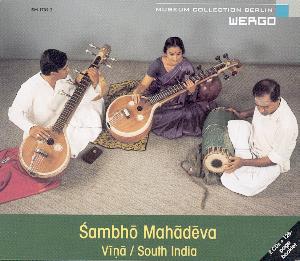Dr. Karaikudi Subramanian and Dr. Meenakshi Subramanian salute Dr. Pia Buonomo Srinivasan (May 15, 1931 – April 8, 2022)1 for her respect and selfless contribution to vina and its tradition. […] We dedicate the raga Sri2 she loved particularly in her memory. | Read the full tribute posted on the video channel of Brhaddhvani – Research and Training Centre for Musics of the World >>
Karaikudi style is not a family style.
It is a veena style.
THE JOURNAL of THE MUSIC ACADEMY MADRAS
Devoted to the Advancement of the Science and Art of Music
Vol. LXXVII 2006, pp. 28-31
The Karaikudi Style
“Bhani” from “bhanihi” in Sanskrit which is from the root word “bhan” meaning “sound”. “Bhanihi” also has another meaning, “weaving”. Literally it is “weaving with sound”. But when one talks about style, a “bhani” in Carnatic [music], first and foremost is that one recognizes the total personality of the performer speaking through the music performed. The personality encompasses the way in which the performer has lived, the number of years staying with the master, the values held, the music listened to, the aesthetics developed, the right and wrong integrated unto oneself due to lineage or as disciples of the master, and finally the individual limitations and strength. “Bhani” is generally translated as “style” in English.3 […]
Describing a musical style of a parampara4 going back to several generations in the contemporary context becomes even more difficult, especially in an oral tradition such as Indian music.5 The Karaikudi style of veena playing started from Karaikudi veena brothers, Subbarama Iyer, Sambasiva Iyer’s son’s generation veena players in their family.6 No recordings are available of the music of Subbarama Iyer. […]
Karaikudi style is not a family style. It is a veena style. The lecture was presented by live demonstration at the different places to understand the Karaikudi style by Dr K S Subramanian.
YouTube channel https://www.youtube.com/@KaraikudiVoyage
- Date as per official records, corrected from May 14 preferred and shared for personal reasons [↩]
- The most concise definition of a raga may be that by Joep Bor: a tonal framework for composition and improvisation. [↩]
- Tamil பாணி pāṇi , n. U. bānī. Style, manner, peculiarity – University of Madras Tamil Lexicon [↩]
- Sanskrit sishya paramparā, a series or succession of pupils – Monier-Williams Sanskrit Dictionary [↩]
- “The Karaikudi Bani is characterized by Swaras that stand out, alternating Meetu and firmness with clarity one can feel it only when one listens to it. It is just like saying sugar is sweet. You can understand it only by tasting it.” – Ranganayaki Rajagopalan, quoted in Analytical study of the different banis and techniques of playing the saraswathi veena, PhD thesis by R. Jayanthi, University of Mysore 2006, Ch. 9 [↩]
- “I was twelve when my parents, Veenai Lakshmi Ammal and Narayana Iyer, decided to give me in adoption to her uncle Sambasiva Iyer, who was concerned about the continuity of our tradition.” – Reminiscences: K Sambasiva Iyer and Mysore Vasudevachar, Narthaki Profiles, March 18, 2008 [↩]
